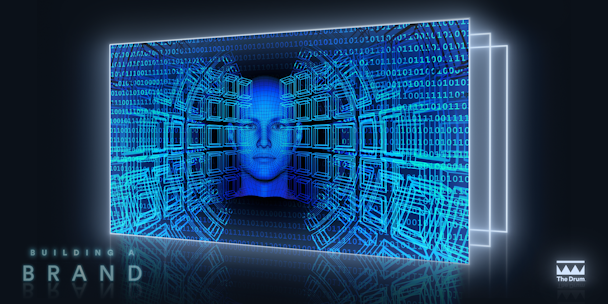How to use AI imagery in your marketing
What is an AI generated image and how can you use it in your marketing?

Using Artificial Intelligence Images in Marketing / Gerd Altmann/Pixabay
AI, or artificial intelligence, has been around for a long time, but it’s foray into generated images is a powerful boost for modern marketing. AI generated images are created by programmed, artificial intelligence software and can often mimic real photographs, scenes, people or art. Whether or not this will make life easier for marketers remains to be seen, since the pros and cons of AI generated images are up for debate. A recent survey indicated that artificial intelligence in marketing rocketed to a whopping 84% in 2020, up from 29% in 2018. Numbers don’t lie – the use of AI in marketing has solidified its place in the future.
How AI images are generated
It didn’t take long for tech geniuses to elevate the field of artificial intelligence with AI image generators. Generators use algorithms to interpret data into AI images and work in several ways:
-
Text to image: Translating natural language, such as text, into unique, credible images
-
Image to image: Creation of an image variation from an original image
-
Image/text to image: Changes and edits made to an original image based on language
While the process may sound complicated, in theory it is actually quite simple. Even Elon Musk has joined the fray with Dall-E, one of the more popular image generators. The website of Musk’s newest version, Dall-E 2, describes it this way: “Dall-E 2 has learned the relationship between images and the text used to describe them. It uses a process called diffusion, which starts with a pattern of random dots and gradually alters that pattern towards an image when it recognizes specific aspects of that image.” Simple right?
Advertisement
Generators give smaller companies the opportunity to use AI imagery in their marketing without investing too much time and money building their own customized algorithms. While many of the more sophisticated generators are by invitation only, they will soon be available to more brands in need of this type of imagery. Other companies, such as Stable Diffusion and Midjourney, offer their own version of AI image generators, with several upstart companies working on their own algorithmic image software.
Advertisement
Advantages of using AI imagery
The benefits of using AI imagery are varied and no doubt increasing as technology expands. Companies are just now testing the waters, although Heinz Ketchup jumped in with both feet by creating an eye-catching video-ad using AI image generators. While still new as far as applications in marketing, the benefits speak for themselves:
-
Virtually limitless
-
No required art skills
-
Several generation methods
-
Rapidly evolving technology and tools
-
Faster creation period
-
Fewer legalities
-
Better control of visuals, marketing components
With the advent of its imagery applications, AI has potential to be a standalone media format – synthetic media. Created only from AI intelligence, synthetic images fall within that format and are strictly text-to-image generated. A company leading the artificial intelligence battle is vAlsual and it describes this type of technology as an “algorithmic camera” with the ability to translate almost any type of content into imagery. Despite its infancy, this type of technology can bring almost anything into visual reality.
Suggested newsletters for you
And the cons?
Regardless of the possibilities, AI imagery has its downsides. Creatives such as artists and illustrators are worried that technology will replace them in a very competitive and expanding market. If AI generators become more widespread and can spit out imagery cheaper and more efficiently, their worries may soon be realized.
Other issues such as copyright infringement and biometric security are also worrisome. As of right now, most AI imagery is based on other images with generators trained on bits and pieces of current types of art. Most of these are copyrighted and this begs the question, who owns the rights to the generated image?
Also entangled in the legality of AI imagery are the people in the images that train the software, from models to celebrities. Where is their compensation or ownership of rights? It is a legal quagmire that unfortunately has no precedence and will have lawyers scratching their heads for years to come.
How to use AI imagery in your marketing
If you decide to give it a go and see where AI imagery fits into your marketing plan there are some details you ought to pay attention to.
Decide if your company is capable of developing AI imagery or if you will need to outsource. If you want to buy a ready-made image, Generated Photos is currently offering stock AI images. Should your company choose to develop your own, make sure you have the necessary tools to create a high-quality image and can secure all data. You will also need to consider if the investment is going to pay off and how it will be used. Will you be replacing traditional imagery methods, or just using it occasionally?
Image generation isn’t the only way to use AI in your marketing. AI powered features such as background removal, cartoonization, retouching and image enhancement are additional ways AI can assist.
Technology will always advance light years ahead of what we may be prepared for, but if companies are to continue to grow, they must keep up with the high-tech ‘Joneses’. Fortunately, technology, including AI, isn’t autonomous and still requires humans behind the machines. Without our brains, a computer is just metal and plastic parts thrown into a box.
But still, technology is exciting and artificial intelligence even more so. If you can combine the emotional needs of the consumer with AI imagery in your marketing, you may be onto something big.
For more helpful marketing insights, sign up for The Drum Plus here.
